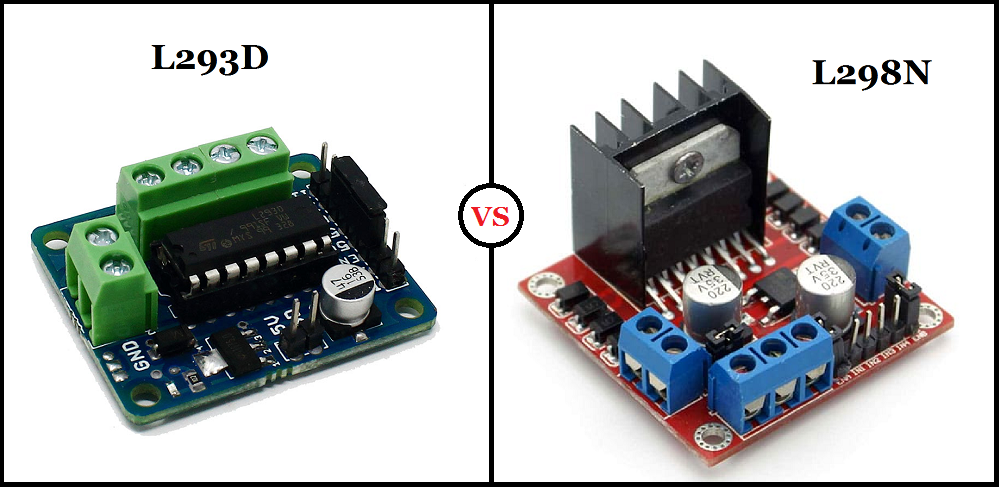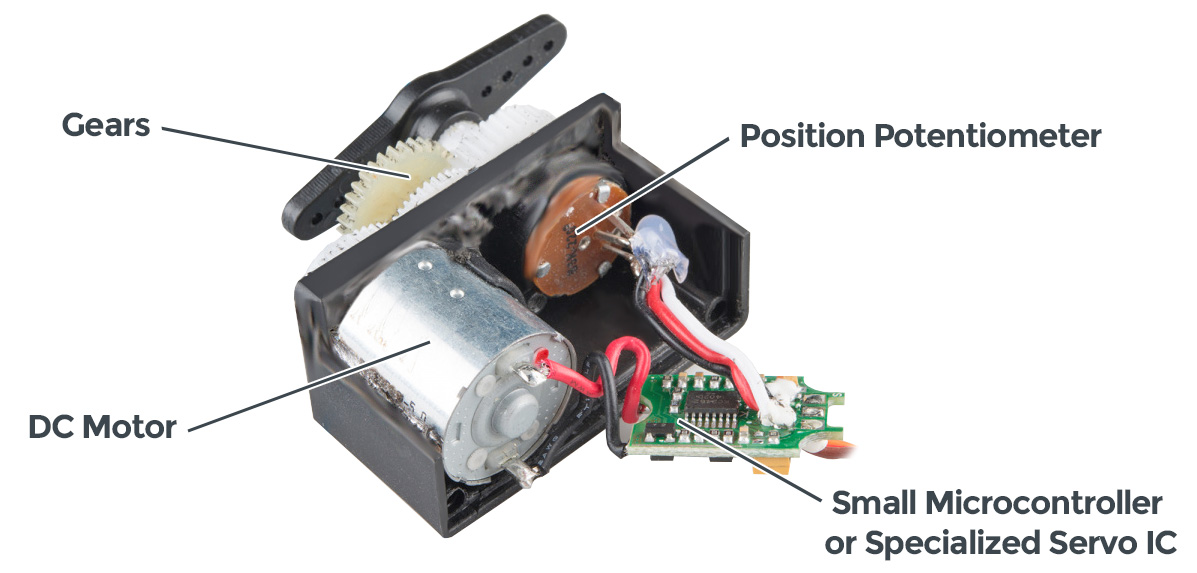Guide to Select Motor for your DIY

DIY – Do It Yourself is the one of the most adventurous things undertaken by many on a day-to-day basis. It is an inevitable thing to do for electronics hobbyists and engineering freshers. The joy one experiences on seeing their mini prototype work flawlessly is priceless. And that joy is out of the world if the prototype is a motile one. For any motile work, the first motile source that comes to your mind is the electric motor and choosing the best one that suits your work is very crucial. Since there are many detailed motor guides out there, I am not making another one, instead in this article I will share some tips on the following areas to narrow down to the motor for your DIY.
- Metal Gear or Plastic Gear Motor
- How to select RPM of motor
- Motor Controller: L293d or L298n
- Precautions, Practices and Warnings
Complete motor guide for DIY: https://www.instructables.com/Complete-Motor-Guide-for-Robotics/
Metal Gear or Plastic Gear?

This confusion mainly arises while making a purchase for servo motors. However, this extends to other normal prototyping motors as well. First and foremost, I have to tell you that both plastic and metal gear motors has advantages and disadvantages of its own. One may infer from the name that metal gears can survive crashes and take on immensely varying load. This can be true to some extend but that does not mean that plastic gear motors are lame and metal gear motors are immortal.
The real selection criteria for Metal or Plastic gearing is the load and load variations, duration of use, cost, wear and tear.
A plastic gear train and a metal gear train rated for the same load can obviously bear that load. The selection criteria here is to see the duration of operation, load fluctuations and cost. If you are just working on a demo model that won’t be used for long, go for plastic ones and save a couple of money for your jumpers, hook-ups etc.
Plastic ones weigh a bit less than the metal ones and also, they are less noisy. If the prototype has chances of impact or crashes go for the plastic ones initially, finalise the design and then equip it with a metal gear train so that loss due to testing of prototype can be reduced as we used plastic ones initially, which is cheap.
I have gone for plastic ones a lot of times than metal ones. Normally I select metal gear train when there are frequent load variations because I have experienced gear teeth slippage, totally stripped gears and even deformed gears that lead to wobbly output shaft on using plastic gear train for frequently varying loads.
How to select RPM of motor?

6V 600RPM, 12V 15000RPM, 12V 10RPM 6V 100 RPM… these are surely going to put a beginner in a tough situation to place an order.
You may not know the exact speed or RPM you want to work with but you surely will have an idea about it. For instance, if you are making an RC Car, you may not know its RPM or speed but you may have an idea of how fast you want it to go. In this case, you will have to figure it out yourself. Let’s just say, you refer YouTube and watch reviews of RC cars available in the market; this gives you the necessary insights into the model with expected speed. By googling the model, you can get the speed of the model and you can divide the speed in minutes with your wheel circumference and get the rpm of the gear motor. I am pretty sure you won’t take a 150000RPM motor to achieve “god speed” as the motor won’t be having enough torque and power to do so. Also, if you find one, I can’t wait to see you handle the RC Car.
When it comes to drilling and cutting like PCB drilling, high RPM comes into picture. And for prototypes like pulleys, lifts etc use low RPM motor which has high torque. As the motor RPM is converted to Torque using high gear ratio.
Motor Controller: L293d or L298n

| Sl.No: | Property | L298N | L293d |
|---|---|---|---|
| 1 | Logical Voltage | 4.5V - 7V | 4.5V - 5.5V |
| 2 | Driver Voltage | 5V - 46V | 4.5V - 36V |
| 3 | Continuous Current | 2A | 1.2A |
| 4 | Continuous Current/Channel | 1A | 600mA |
| 5 | Peak Current/Channel | 2A | 1.2A |
| 6 | Efficiency | 30-70% | 50-90% |
| 7 | Fast Direction Change | Heating | Less Heating |
| 8 | Internal Protection Diode | NO | YES |
| 9 | H Bridge | Dual | Half |
| 10 | Temperature Protection | YES | YES |
| 11 | Noise Immunity | HIGH | LOW |
Precautions, Practices and Warnings
-
You can check the DC motor easily by just shorting its terminals and trying to rotate its shaft gently with your hand. If it is a bit hard to rotate the shaft when compared to open terminals the motor is working fine
-
You can always use your motor as a generator for your renewable energy demo projects.
-
If 2 or more motors are connected parallel, we can check the wiring for loose contact by rotating one motor and checking for some movement in other motors.
-
The motor terminals are very weak. Solder wire into them if you have above average soldering skills instead use stranded electronics wire to braid it into the terminals firmly. This tip has enabled me to use the same motor safely in multiple projects without completely dismantling.
-
When you have two similar faulty gear motors lying around, you can dismantle them and use one motor parts as spare parts for other. In most cases it won’t be the same gear that fails. You can do the same for faulty servos. Some servo may stop its service due to faulty electronic parts and some due to gear failure. You can combine them and bring one to life.

-
Ensure you have a diode in reverse bias shorting the terminals of motor. This diode is called bleeding diode this prevents the back flow of current to the power source which may cause it to fail.
-
Try to incorporate capacitors or ample power supply to feed the load fluctuations in the motor. Else if you are using logic circuit there are increased chances for the logic circuit to reset.
Having said all of that, you may encounter hundreds of confusions as a beginner in the field of engineering. Just make the move and always remember:
Mistakes are the best teacher
